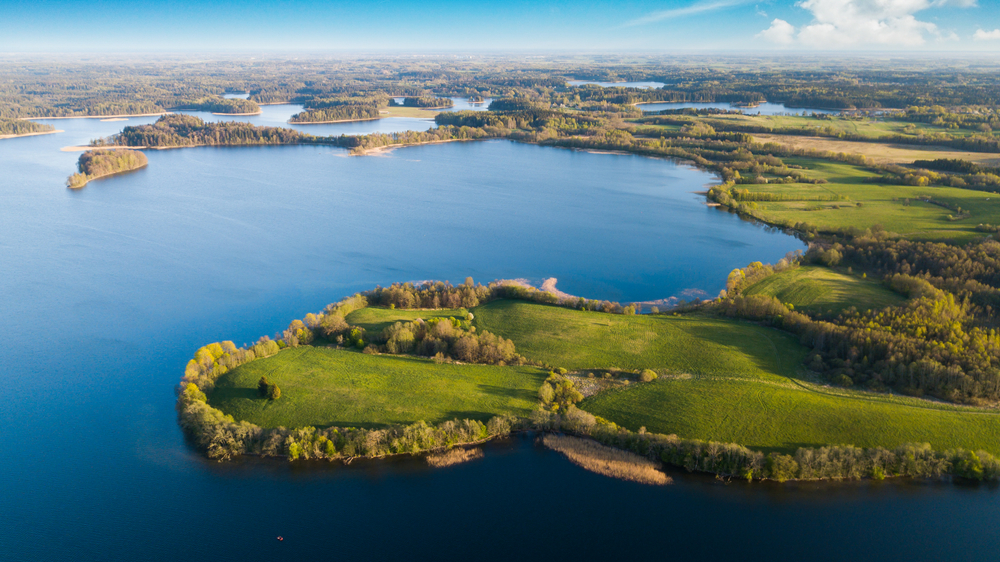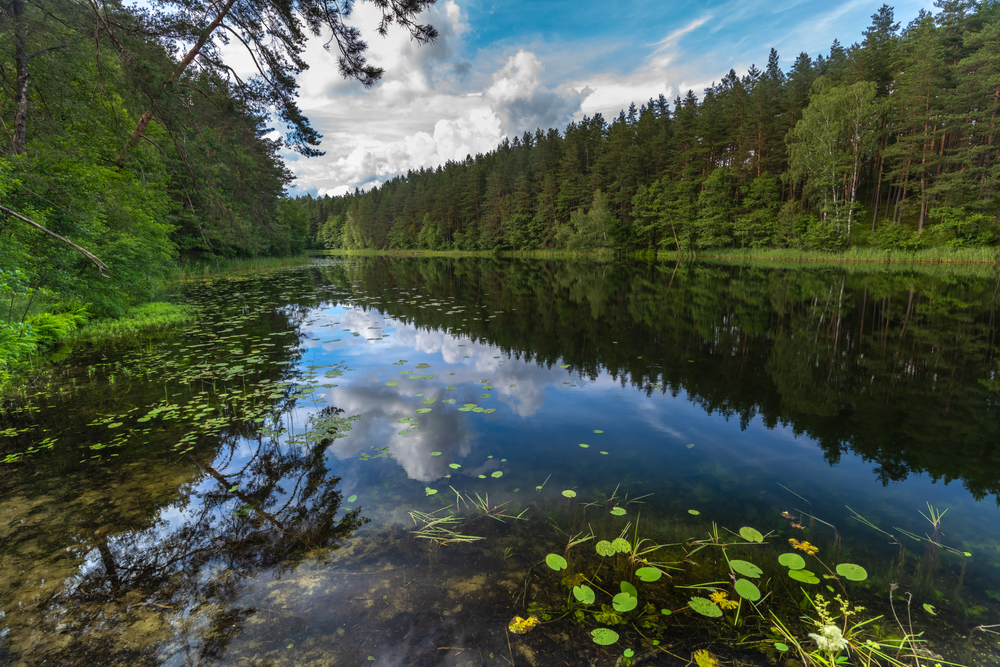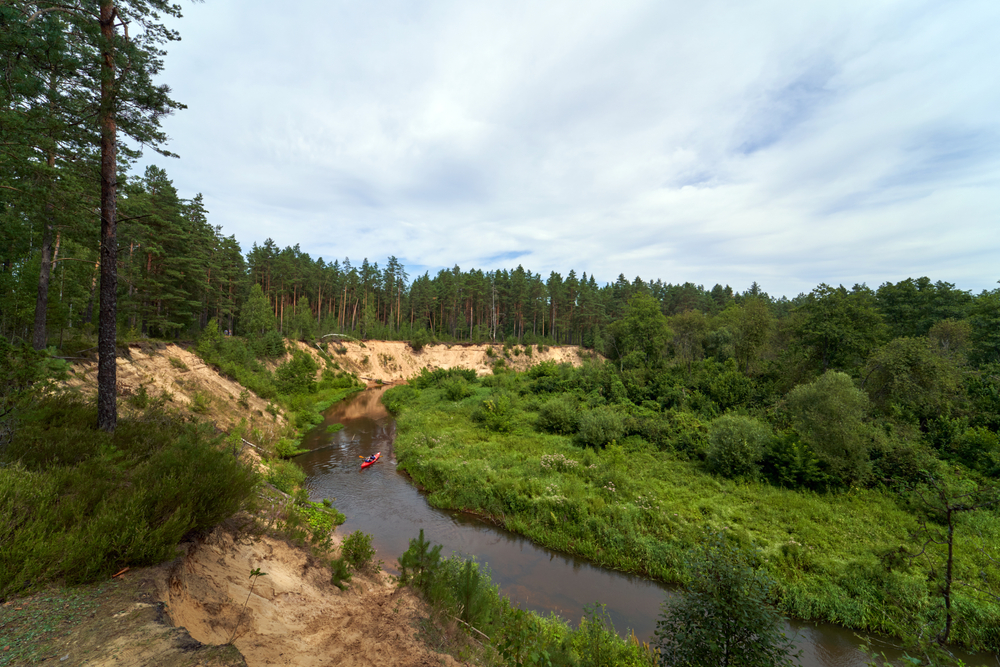Zemaitija Overview
Žemaitija National Park, known locally as Žemaitijos nacionalinis parkas, is a natural treasure located in the northwestern part of Lithuania, near the town of Plateliai. Spanning approximately 82 square miles (210 square kilometers), the park is a serene expanse that embodies the beauty of Lithuania’s Žemaitija region.
Established in 1991, it preserves the unique cultural, historical, and ecological landscape of this part of the country while offering a refuge for diverse plant and animal species. The terrain of Žemaitija National Park is a mix of rolling hills, dense forests, and glistening lakes, with its most prominent feature being Lake Plateliai.
Covering an area of 4.9 square miles (12.7 square kilometers), Lake Plateliai is the largest and deepest lake in Samogitia (Žemaitija). Its pristine waters and surrounding islands, such as Pilies Island, which hosts the remnants of an ancient castle, are key highlights of the park. The park also includes several bogs, meadows, and ancient woodlands, particularly home to species of oak, pine, and birch. Its diverse vegetation contributes to the picturesque landscape, especially in autumn when the trees blaze with vibrant colors.
Wildlife enthusiasts visiting Žemaitija National Park will be delighted by the variety of species inhabiting the area. Among mammals, visitors may encounter red deer, roe deer, foxes, and occasionally European badgers or wild boars. The park is also home to the rare European mink and Eurasian otter.
For bird lovers, Žemaitija offers the chance to spot species such as the white-tailed eagle, black stork, and great crested grebe, which often nest near the lakes. The park’s wetlands and woodlands also support a wide array of smaller birds, insects, and amphibians, making it a haven for biodiversity.
One of the most popular features of Žemaitija National Park is its well-preserved cultural and historical heritage. In addition to Pilies Island and its medieval castle ruins, the area includes wooden churches, ethnographic villages, and traditional Samogitian homesteads.
Visitors can also explore Cold War-era relics, including a former Soviet missile base that has been converted into an educational museum detailing the region’s 20th-century history.
The park is a hub for outdoor activities, offering ample opportunities for hiking, cycling, and boating. Nature trails wind through the forests and along the shores of Lake Plateliai, providing stunning views of the landscape and access to scenic spots for picnicking and birdwatching. In winter, the park transforms into a snowy paradise, perfect for cross-country skiing.
Conservation efforts in Žemaitija National Park focus on preserving its natural ecosystems and cultural landmarks. Challenges include mitigating the impacts of tourism and managing the delicate balance between human activity and wildlife habitats.
However, the park has seen successes in raising awareness about its ecological and cultural value, engaging local communities in sustainable practices, and protecting endangered species. Through continuous efforts, Žemaitija National Park remains a pristine example of Lithuania’s dedication to its natural and cultural heritage.














































































